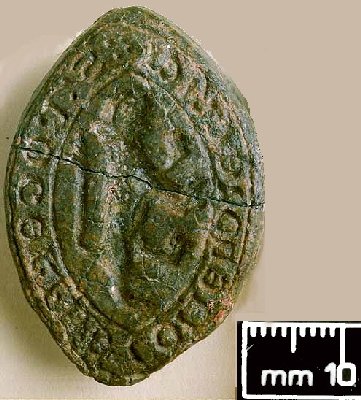|
|
Seal Matrix of Roger de Cumnor from Oxford: 13th century |

In Medieval society, individualistic handwritings and signatures were not highly developed, and the use of seals was considered vital.
There was much work for lawyers in 13th-century Oxford. All legal work had to be done by hand with quill pen and ink on parchment, or sheep’s hide. The only legal form of identification for documents like this was the seal of the person or institution. The seal stamp, or matrix, was made of lead or silver, and the seal itself of wax.
Roger de Cumnor was an important and busy lawyer in 13th-century Oxford, and many documents written, signed and sealed by Roger are preserved in the Bodleian, the University Library, or in the colleges. It had always puzzled historians that half-way through the series of documents, Roger’s seal had changed to a new design. The mystery was solved in 1989, when excavating on the site of a house in West Oxford owned by Roger, the matrix for the earlier seal design used by him was found in a ditch alongside his property - having lost it there one dark night, he was obliged to have a new one made to continue his legal work.
© 1998 Oxfordshire Museum Service, Setúbal Museums and the Benaki Museum